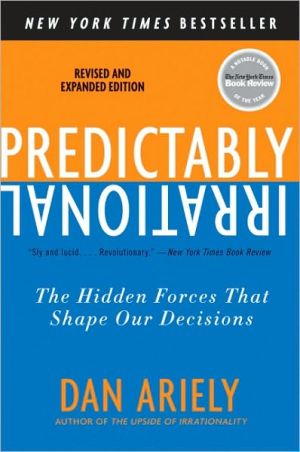Being and Time
"What is the meaning of being?" This is the central question of Martin Heidegger's profoundly important work, in which the great philosopher seeks to explain the basic problems of existence. A central influence on later philosophy, literature, art, and criticism—as well as existentialism and much of postmodern thought—Being and Time forever changed the intellectual map of the modern world. As Richard Rorty wrote in the New York Times Book Review, "You cannot read most of the important...
Search in google:
"What is the meaning of being?" This is the central question of Martin Heidegger's profoundly important work, in which the great philosopher seeks to explain the basic problems of existence. A central influence on later philosophy, literature, art, and criticism—as well as existentialism and much of postmodern thought—Being and Time forever changed the intellectual map of the modern world. As Richard Rorty wrote in the New York Times Book Review, "You cannot read most of the important thinkers of recent times without taking Heidegger's thought into account." This first paperback edition of John Macquarrie and Edward Robinson's definitive translation also features a new foreword by Heidegger scholar Taylor Carman. Library Journal One of the landmarks of 20th-century philosophy, Heidegger's 1927 treatise is thought to have been the inspiration for such subjects as psychoanalysis, existentialism, ethics, hermeneutics, and more. This new translation by one of Heidegger's students offers the text in a more precise and understandable English than earlier editions.
Being and Time \ Chapter One\ Exposition of the Task of a Preparatory Analysis of Dasein\ The Theme of the Analytic of Dasein\ We are ourselves the entities to be analysed. The Being of any such entity is in each case mine. These entities, in their Being, comport themselves towards their Being. As entities with such Being, they are delivered over to their own Being. Being is that which is an issue for every such entity. This way of characterizing Dasein has a double consequence:\ I. The 'essence' ["Wesen"] of this entity lies in its "to be" [Zu-sein]. Its Being-what-it-is [Was-sein] (essentia) must, so far as we can speak of it at all, be conceived in terms of its Being (existentia). But here our ontological task is to show that when we choose to designate the Being of this entity as "existence" [Existenz], this term does not and cannot have the ontological signification of the traditional term "existentia"; ontologically, existentia is tantamount to Being-present-at-hand, a kind of Being which is essentially inappropriate to entities of Dasein's character. To avoid getting bewildered, we shall always use the Interpretative expression "presence-at-hand" for the term "existentia", while the term "existence", as a designation of Being, will be allotted solely to Dasein.\ The 'essence' of Dasein lies in its existence. Accordingly those characteristics which can be exhibited in this entity are not 'properties' present-at-hand of some entity which 'looks' so and so and is itself present-at-hand; they are in each case possible ways for it to be, and no more than that. All the Being-as-it-is [So-sein] which this entity possesses is primarilyBeing. So when we designate this entity with the term 'Dasein', we are expressing not its "what" (as if it were a table, house or tree) but its Being.\ 2. That Being which is an issue for this entity in its very Being, is in each case mine. Thus Dasein is never to be taken ontologically as an instance or special case of some genus of entities as things that are present-at-hand. To entities such as these, their Being is 'a matter of indifference'; or more precisely, they 'are' such that their Being can be neither a matter of indifference to them, nor the opposite. Because Dasein has in each case mineness [Femeinigkeit], one must always use a personal pronoun when one addresses it: 'I am', 'you are'.\ Furthermore, in each case Dasein is mine to be in one way or another. Dasein has always made some sort of decision as to the way in which it is in each case mine [je meines]. That entity which in its Being has this very Being as an issue, comports itself towards its Being as its ownmost possibility. In each case Dasein is its possibility, and it 'has' this possibility, but not just as a property [eigenschaftlich], as something present-at-hand would. And because Dasein is in each case essentially its own possibility, it can, in its very Being, 'choose' itself and win itself; it can also lose itself and never win itself; or only 'seem' to do so. But only in so far as it is essentially something which can be authentic -- that is, something of its own -- can it have lost itself and not yet won itself. As modes of Being, authenticity and inauthenticity (these expressions have been chosen terminologically in a strict sense) are both grounded in the fact that any Dasein whatsoever is characterized by mineness. But the inauthenticity of Dasein does not signify any 'less' Being or any 'lower' degree of Being. Rather it is the case that even in its fullest concretion Dasein can be characterized by inauthenticity -- when busy, when excited, when interested, when ready for enjoyment.\ The two characteristics of Dasein which we have sketched -- the priority of 'existentia' over essentia, and the fact that Dasein is in each case mine [die Jemeinigkeit] -- have already indicated that in the analytic of this entity we are facing a peculiar phenomenal domain. Dasein does not have the kind of Being which belongs to something merely present-at-hand within the world, nor does it ever have it. So neither is it to be presented thematically as something we come across in the same way as we come across what is present-at-hand. The right way of presenting it is so far from self-evident that to determine what form it shall take is itself an essential part of the ontological analytic of this entity. Only by presenting this entity in the right way can we have any understanding of its Being. No matter how provisional our analysis may be, it always requires the assurance that we have started correctly.\ In determining itself as an entity, Dasein always does so in the light of a possibility which it is itself and which, in its very Being, it somehow understands. This is the formal meaning of Dasein's existential constitution. But this tells us that if we are to Interpret this entity ontologically, the problematic of its Being must be developed from the existentiality of its existence. This cannot mean, however, that "Dasein" is to be construed in terms of some concrete possible idea of existence. At the outset of our analysis it is particularly important that Dasein should not be Interpreted with the differentiated character [Differenz] of some definite way of existing, but that it should be uncovered [aufgedeckt] in the undifferentiated character which it has proximally and for the most part. This undifferentiated character of Dasein's everydayness is not nothing, but a positive phenomenal characteristic of this entity. Out of this kind of Being -- and back into it again -- is all existing, such as it is. We call this everyday undifferentiated character of Dasein "averageness" [Durchschnittlichkeit].\ And because this average everydayness makes up what is ontically proximal for this entity, it has again and again been passed over in...\ Being and Time. Copyright © by Martin Heidegger. Reprinted by permission of HarperCollins Publishers, Inc. All rights reserved. Available now wherever books are sold.
Foreword Taylor Carman xiiiTranslators' Preface xxiiiAuthor's Preface to the Seventh German Edition xxviiIntroduction: Exposition of the Question of the Meaning of Being 21The Necessity, Structure, and Priority of the Question of Being 21The necessity for explicitly restating the question of Being 21The formal structure of the question of Being 24The ontological priority of the question of Being 28The ontical priority of the question of Being 32The Twofold Task in Working Out the Question of Being. Method and Design of our investigation 36The ontological analytic of Dasein as laying bare the horizon for an Interpretation of the meaning of Being in general 36The task of Destroying the history of ontology 41The phenomenological method of investigation 49The concept of phenomenon 51The concept of the logos 55The preliminary conception of phenomenology 58Design of the treatise 63The Interpretation of Dasein in Terms of Temporality, and the Explication of Time as the Transcendental Horizon for the Question of BeingDivision One: Preparatory Fundamental Analysis of DaseinExposition of the Task of a Preparatory Analysisof Dasein 67The theme of the analytic of Dasein 67How the analytic of Dasein is to be distinguished from anthropology, psychology, and biology 71The existential analytic and the Interpretation of primitive Dasein. The difficulties of achieving a 'natural conception of the world' 76Being-in-the-world in General as the basic state of Dasein 78A preliminary sketch of Being-in-the-world, in terms of an orientation towards Being-in as such 78A founded mode in which Being-in is exemplified. Knowing the world 86The Worldhood of the World 91The idea of the worldhood of the world in general 91Analysis of environmentality and worldhood in general 95The Being of the entities encountered in the environment 95How the worldly character of the environment announces itself in entities within-the-world 102Reference and signs 107Involvement and significance: the worldhood of the world 114A contrast between our analysis of worldhood and Descartes' Interpretation of the world 122The definition of the 'world' as res extensa 123Foundations of the ontological definition of the 'world' 125Hermeneutical discussion of the Cartesian ontology of the 'world' 128The aroundness of the environment, and Dasein's spatiality 134The spatiality of the ready-to-hand within-the-world 135The spatiality of Being-in-the-world 138Space, and Dasein's spatiality 145Being-in-the-world as Being-with and Being-one's-self. The 'They' 149An approach to the existential question of the "who" of Dasein 150The Dasein-with of Others, and everyday Being-with 153Everyday Being-one's-Self and the "they" 163Being-in as suchThe task of a thematic analysis of Being-in 169The existential Constitution of the "there" 172Being-there as state-of-mind 172Fear as a mode of state-of-mind 179Being-there as understanding 182Understanding and interpretation 188Assertion as a derivative mode of interpretation 195Being-there and discourse. Language 203The everyday Being of the "there", and the falling of Dasein 210Idle talk 211Curiosity 214Ambiguity 217Falling and thrownness 219Care as the Being of Dasein 225The question of the primordial totality of Dasein's structural whole 225The basic state-of-mind of anxiety as a distinctive way in which Dasein is disclosed 228Dasein's Being as care 235Confirmation of the existential Interpretation of Dasein as care in terms of Dasein's pre-ontological way of interpreting itself 241Dasein, worldhood, and reality 244Reality as a problem of Being, and whether the 'external world' can be proved 246Reality as an ontological problem 252Reality and care 254Dasein, disclosedness, and truth 256The traditional conception of truth, and its ontological foundations 257The primordial phenomenon of truth and the derivative character of the traditional conception of truth 262The kind of Being which truth possesses, and the presupposition of truth 269Division Two: Dasein and TemporalityThe outcome of the preparatory fundamental analysis of Dasein, and the task of a primordial existential Interpretation of this entity 274Dasein's Possibility of Being-a-whole, and Being-towards-death 279The seeming impossibility of getting Dasein's Being-a-whole into our grasp ontologically and determining its character 279The possibility of experiencing the death of Others, and the possibility of getting a whole Dasein into our grasp 281That which is still outstanding; the end; totality 285How the existential analysis of death is distinguished from other possible Interpretations of this phenomenon 290Preliminary sketch of the existential-ontological structure of death 293Being-towards-death and the everydayness of Dasein 296Everyday Being-towards-the-end, and the full existential conception of death 299Existential projection of an authentic Being-towards-death 304Dasein's Attestation of an Authentic Potentiality-for-being, and Resoluteness 312The problem of how an authentic existentiell possibility is attested 312The existential-ontological foundations of conscience 315The character of conscience as a call 315Conscience as the call of care 319Understanding the appeal, and guilt 325The existential Interpretation of the conscience, and the way conscience is ordinarily interpreted 335The existential structure of the authentic potentiality-for-Being which is attested in the conscience 341Dasein's Authentic Potentiality-for-being-a-whole, and Temporality as the Ontological Meaning of Care 349A preliminary sketch of the methodological step from the definition of Dasein's authentic Being-a-whole to the laying-bare of temporality as a phenomenon 349Anticipatory resoluteness as the way in which Dasein's potentiality-for-Being-a-whole has existentiell authenticity 352The hermeneutical situation at which we have arrived for Interpreting the meaning of the Being of care; and the methodological character of the existential analytic in general 358Care and selfhood 364Temporality as the ontological meaning of care 370Dasein's temporality and the tasks arising there-from of repeating the existential analysis in a more primordial manner 380Temporality and Everydayness 383The basic content of Dasein's existential constitution, and a preliminary sketch of the temporal Interpretation of it 383The temporality of disclosedness in general 384The temporality of understanding 385The temporality of state-of-mind 389The temporality of falling 396The temporality of discourse 400The temporality of Being-in-the-world and the problem of the transcendence of the world 401The temporality of circumspective concern 403The temporal meaning of the way in which circumspective concern becomes modified into the theoretical discovery of the present-at-hand within-the-world 408The temporal problem of the transcendence of the world 415The temporality of the spatiality that is characteristic of Dasein 418The temporal meaning of Dasein's everydayness 421Temporality and Historicality 424Existential-ontological exposition of the problem of history 424The ordinary understanding of history, and Dasein's historizing 429The basic constitution of historicality 434Dasein's historicality, and world-history 439The existential source of historiology in Dasein's historicality 444The connection of the foregoing exposition of the problem of historicality with the researches of Wilhelm Dilthey and the ideas of Count Yorck 449Temporality and Within-time-ness as the source of the ordinary conception of time 456The incompleteness of the foregoing temporal analysis of Dasein 456Dasein's temporality, and our concern with time 458The time with which we concern ourselves, and within-time-ness 464Within-time-ness and the genesis of the ordinary conception of time 472A comparison of the existential-ontological connection of temporality, Dasein, and world-time, with Hegel's way of taking the relation between time and spirit 480Hegel's conception of time 480Hegel's Interpretation of the connection between time and spirit 484The existential-temporal analytic of Dasein, and the question of fundamental ontology as to the meaning of Being in general 486Author's Notes 489Glossary of German Terms 503Index 524
\ Richard Rorty"Powerful and original . . . Being and Time changed the course of philosophy."\ \ \ \ \ Library JournalOne of the landmarks of 20th-century philosophy, Heidegger's 1927 treatise is thought to have been the inspiration for such subjects as psychoanalysis, existentialism, ethics, hermeneutics, and more. This new translation by one of Heidegger's students offers the text in a more precise and understandable English than earlier editions.\ \








